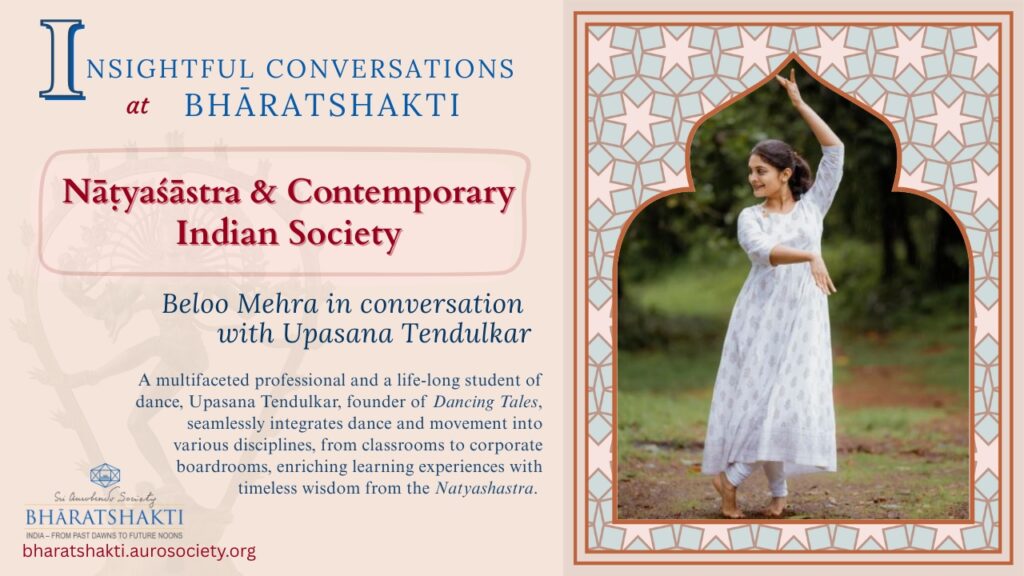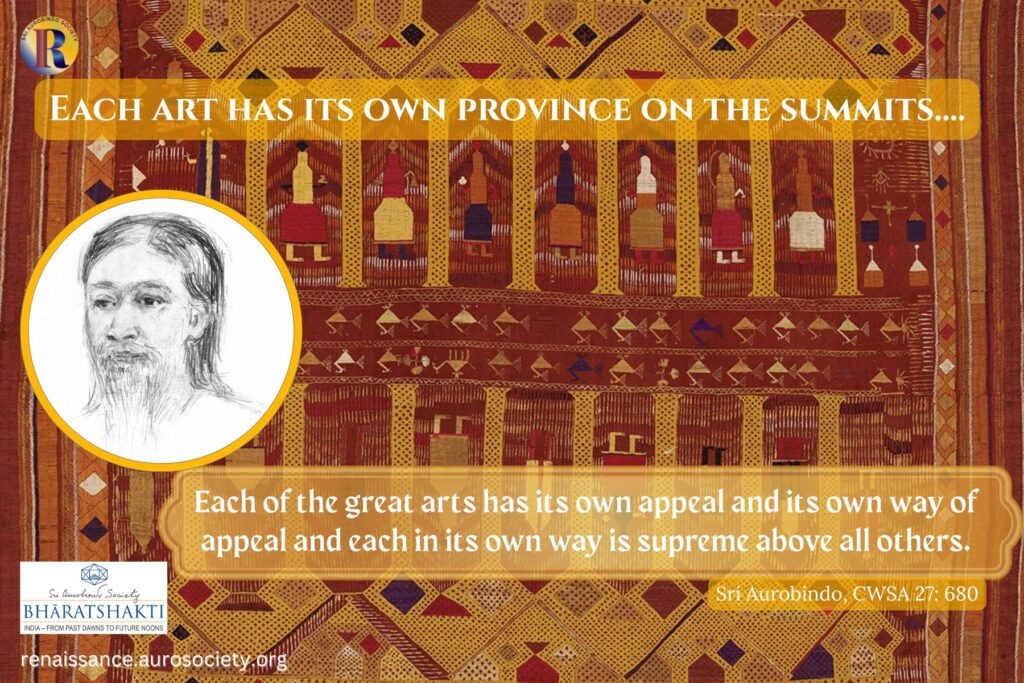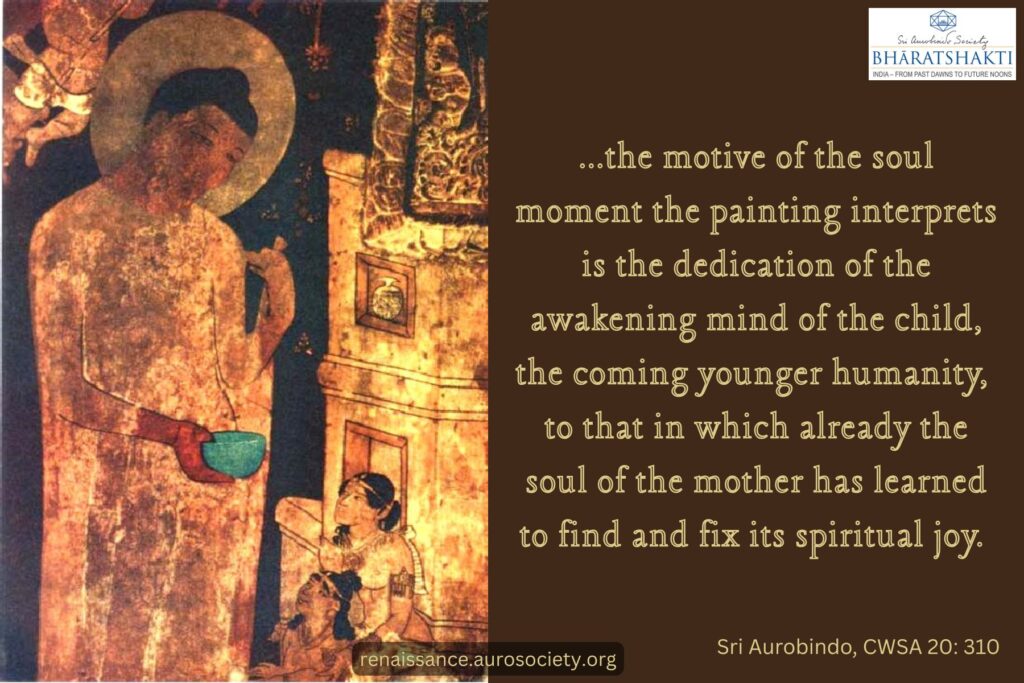Volume VI, Issue 1
Author: Narendra Murty
Editor’s Note: Enjoy a photo-tour of Angkor Wat and Bayun in Cambodia. Indian rock-cut architecture had deeply influenced Khmer temple architecture. This was part of what Sri Aurobindo calls as “invasion of peace“, towards the Far East and South East Asia. It saw the expansion of Indian culture, spirituality, art and thought-forces.
All photos are clicked by the author himself.

At no time does India seem to have been moved towards an aggressive military and political expansion beyond her own borders; no epic of world dominion, no great tale of far-borne invasion or expanding colonial empire has ever been written in the tale of Indian achievement.
The sole great endeavour of expansion, of conquest, of invasion she attempted was the expansion of her culture, the invasion and conquest of the Eastern world by the Buddhistic idea and the penetration of her spirituality, art and thought-forces. And this was an invasion of peace and not of war, for to spread a spiritual civilization by force and physical conquest, would have been uncongenial to the ancient cast of her mind and temperament and the idea underlying her Dharma.
~ Sri Aurobindo, CWSA, Vol. 20, pp. 425-426
The spread of Indian civilization towards the Far East and South East Asia was an invasion of peace, as Sri Aurobindo tells us. It was the expansion of Indian culture, spirituality, art and thought-forces. As a consequence of this invasion of peace, from Burma to Cambodia, from Singapore to Thailand to Java and Indonesia – we find throughout the East, the remnants of Buddhism and Hinduism – maintaining a peaceful coexistence. Some architectural marvels still survive which sing the glory of the Indian Sacred Architecture.
I had the good fortune to visit Cambodia recently. What follows is an account of what was seen and discovered in that enchanting land. The Khmer temple architecture is heavily influenced by Indian rock-cut temple architecture that is seen in Ajanta, Ellora and Elephanta Caves.
Angkor Wat
One such great specimen is the Angkor Wat temple complex situated near the city of Siem Reap in Cambodia. It is one of the most iconic architectural achievements of the Khmer Empire. Dedicated to Bhagavan Vishnu, it was originally constructed in the early 12th century by Hindu King Suryavarman II.
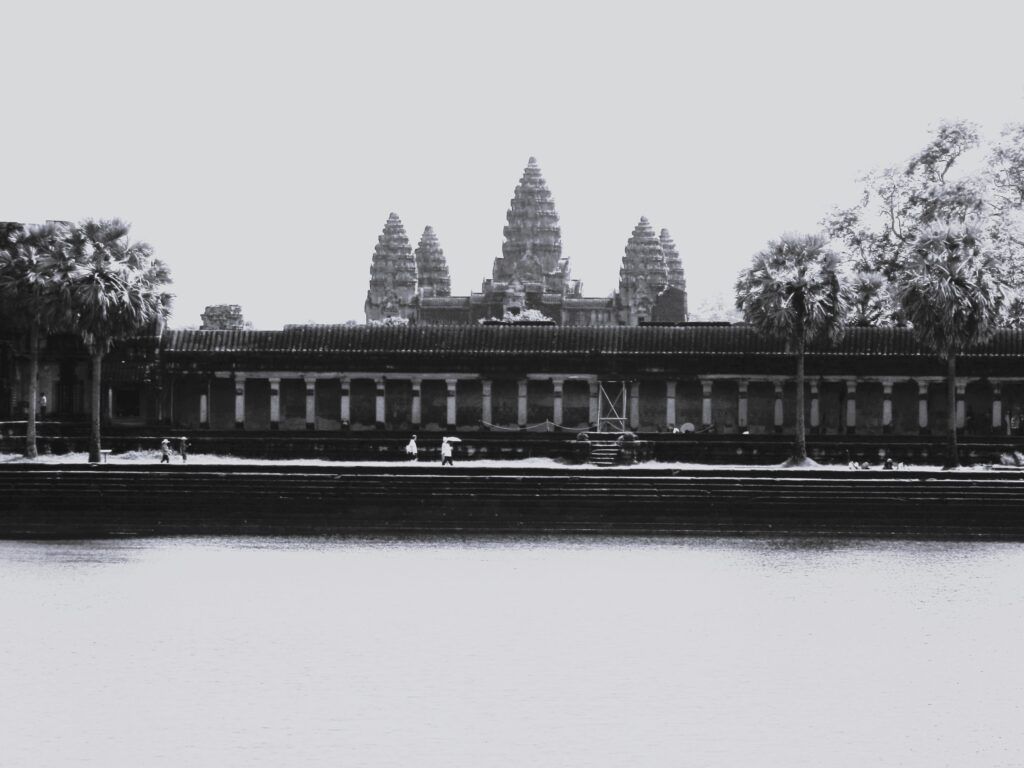
Later on, Buddhist elements were integrated into it reflecting the advent of Buddhism in Cambodia. Angkor Wat entered the Guiness Book of World Records in 2022 when it was officially declared as the largest religious structure of the world. The temple complex spans an area of 162.6 hectares or 402 acres. It is equivalent to 275 football stadiums, which includes its surrounding moat and the main temple structures.
Angkor Wat’s design is supposed to represent the physical world. The moats symbolize the oceans and central towers representing the mountain peaks.
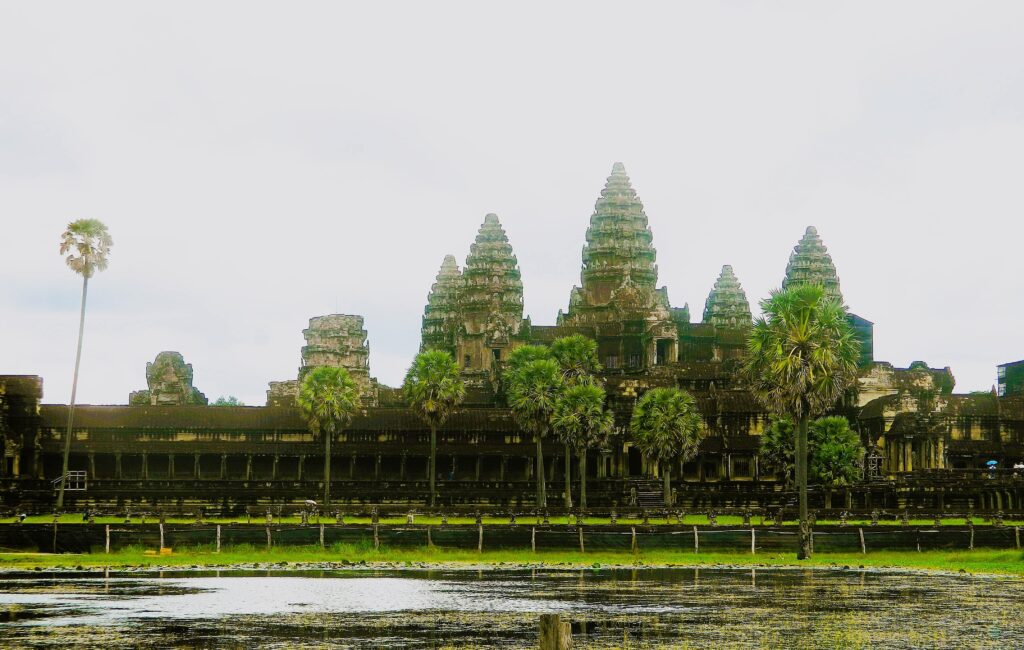
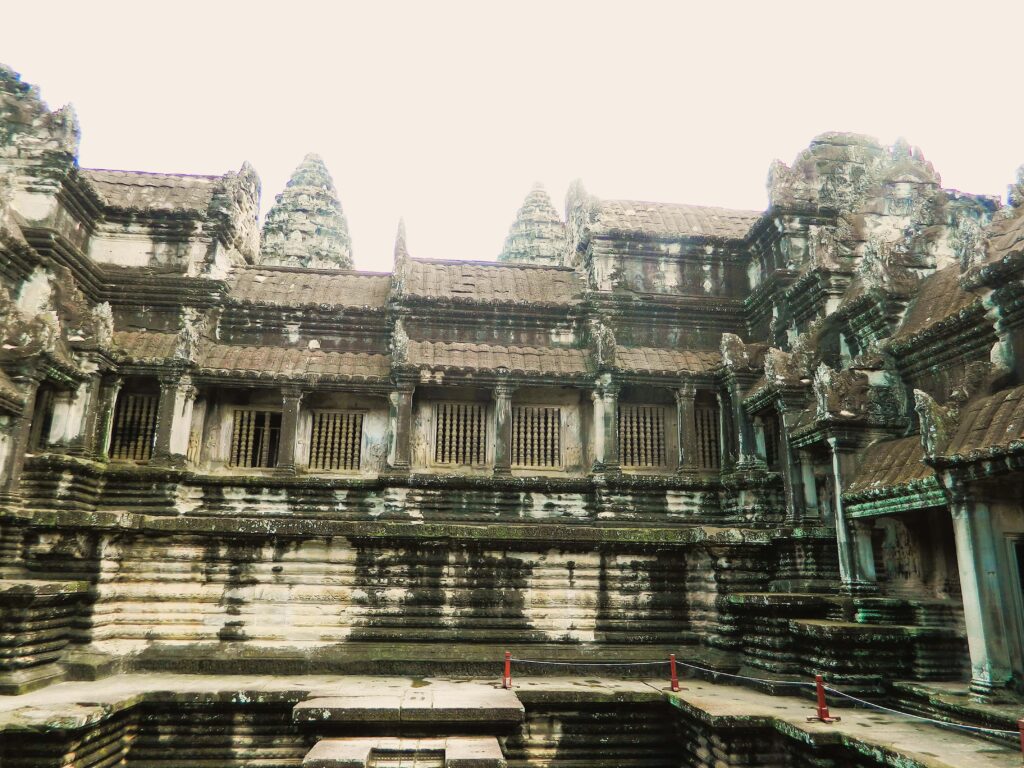
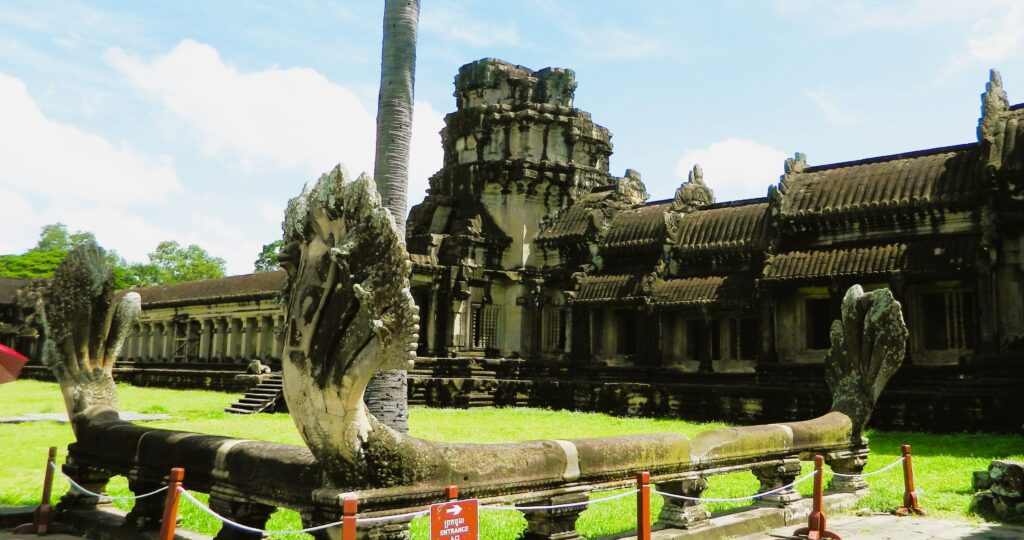
Buddhist images were added to Angkor Wat at a later stage, reflecting the religious evolution of the region. Even after its transition to a Buddhist temple, Angkor Wat retained much of its original Hindu iconography. This is seen in the detailed bas-reliefs depicting the Ramayana and Mahabharata. This coexistence of Hindu and Buddhist elements illustrates the religious syncretism that characterized much of Southeast Asia’s history.
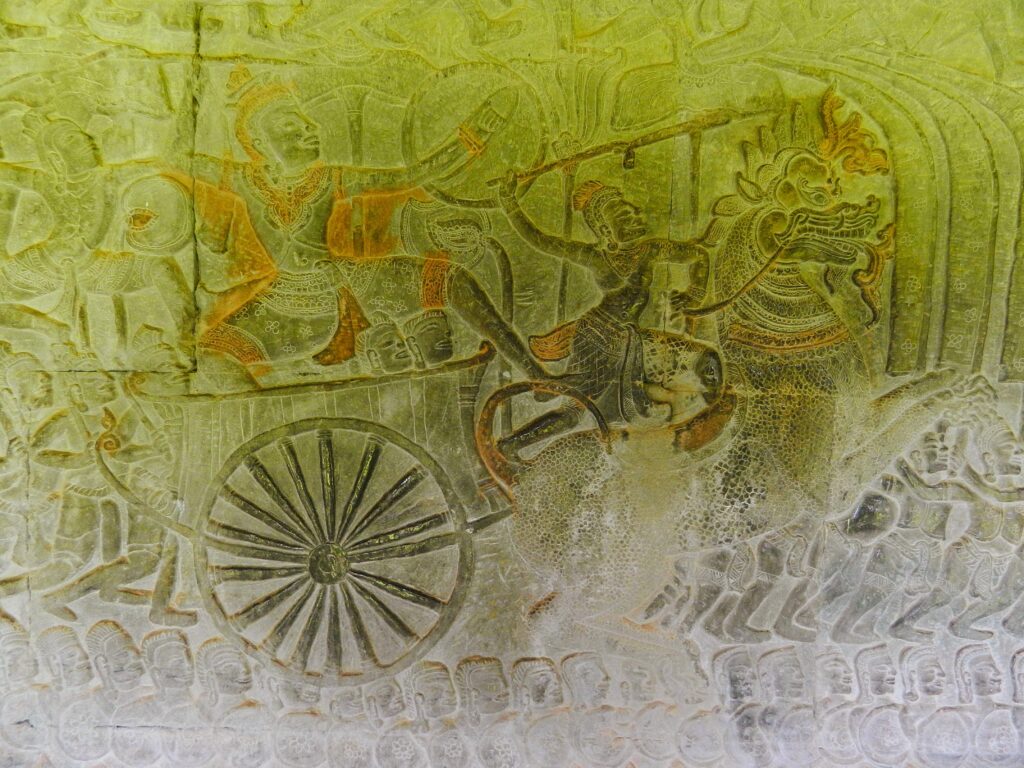
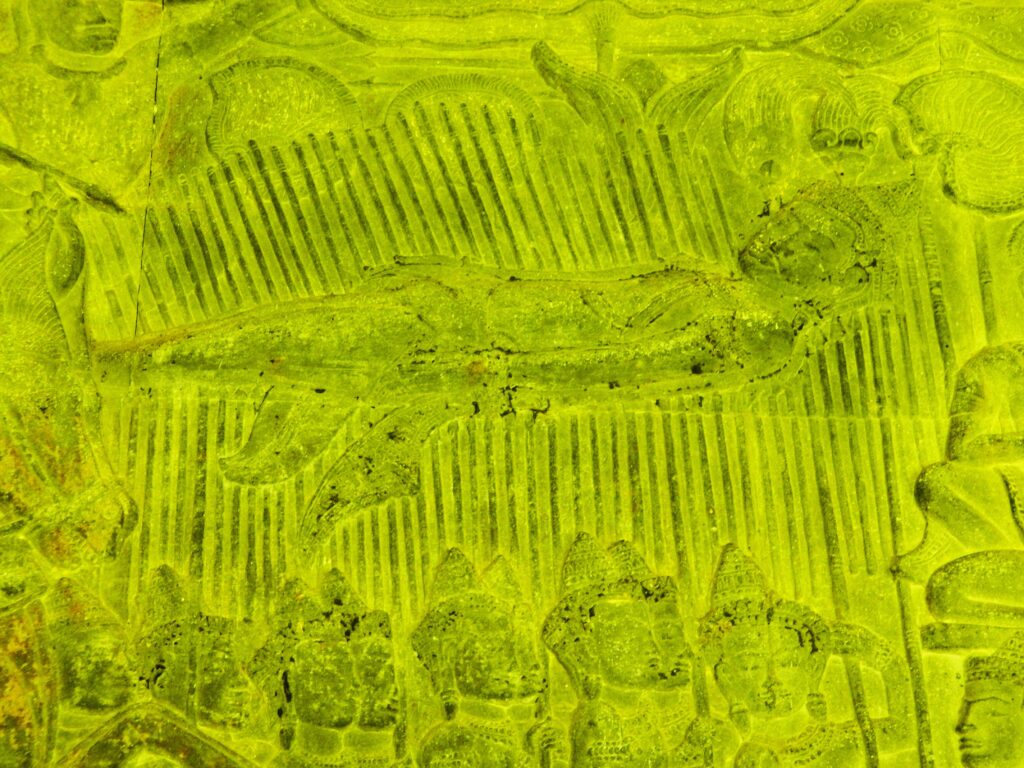
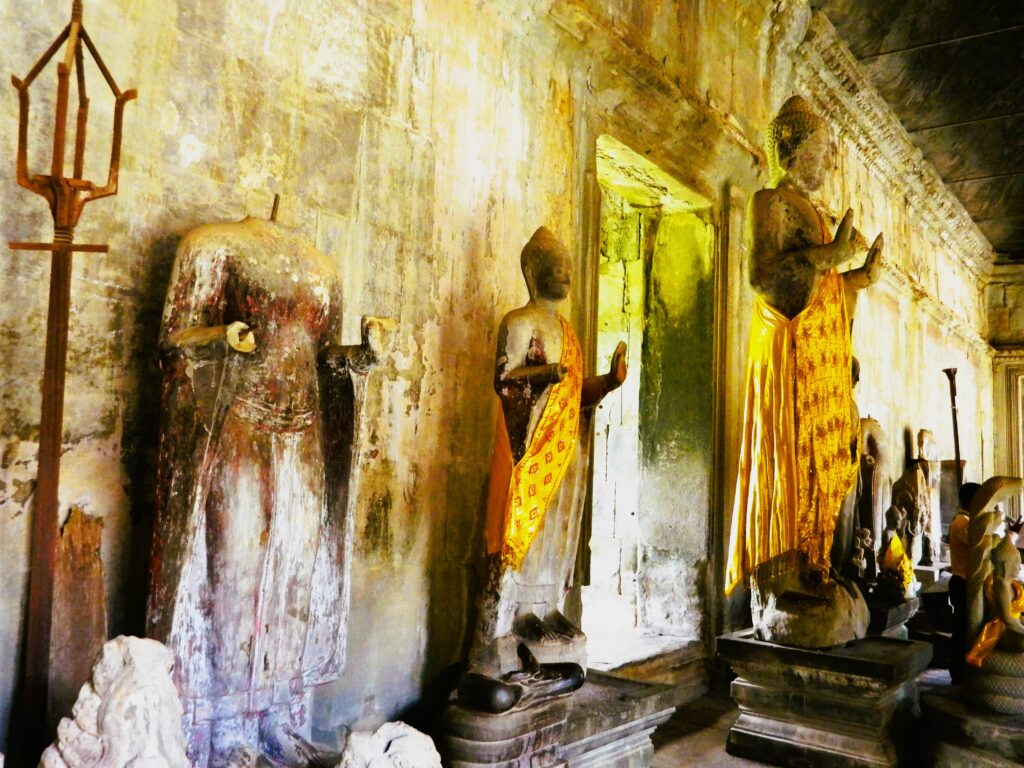
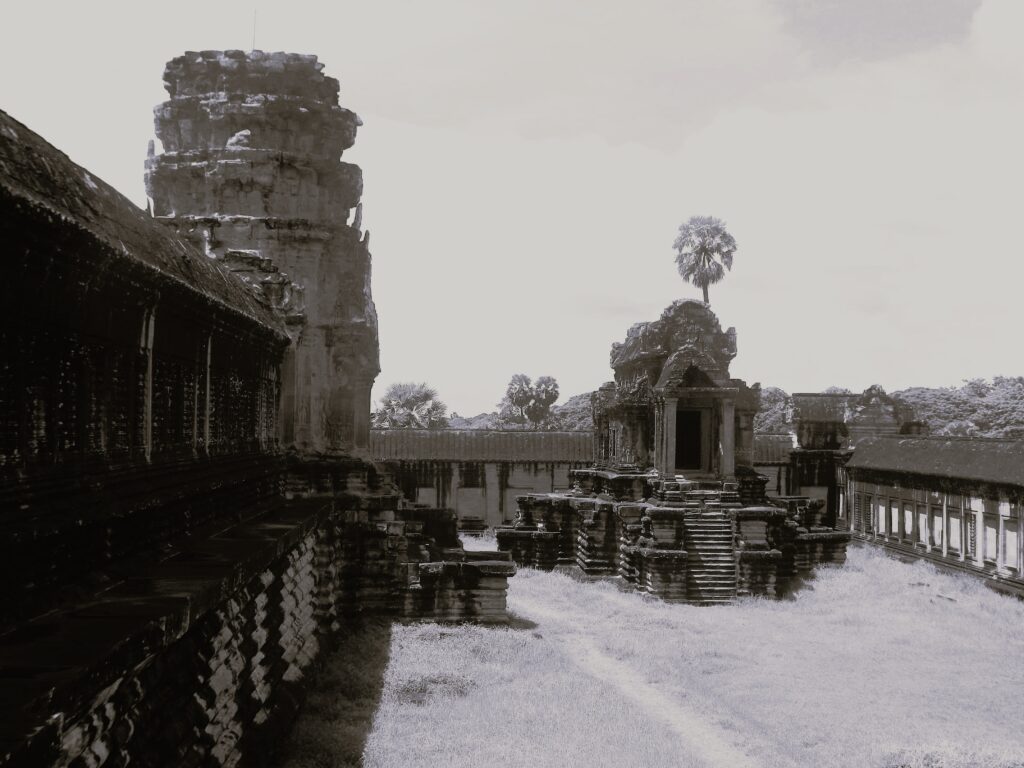
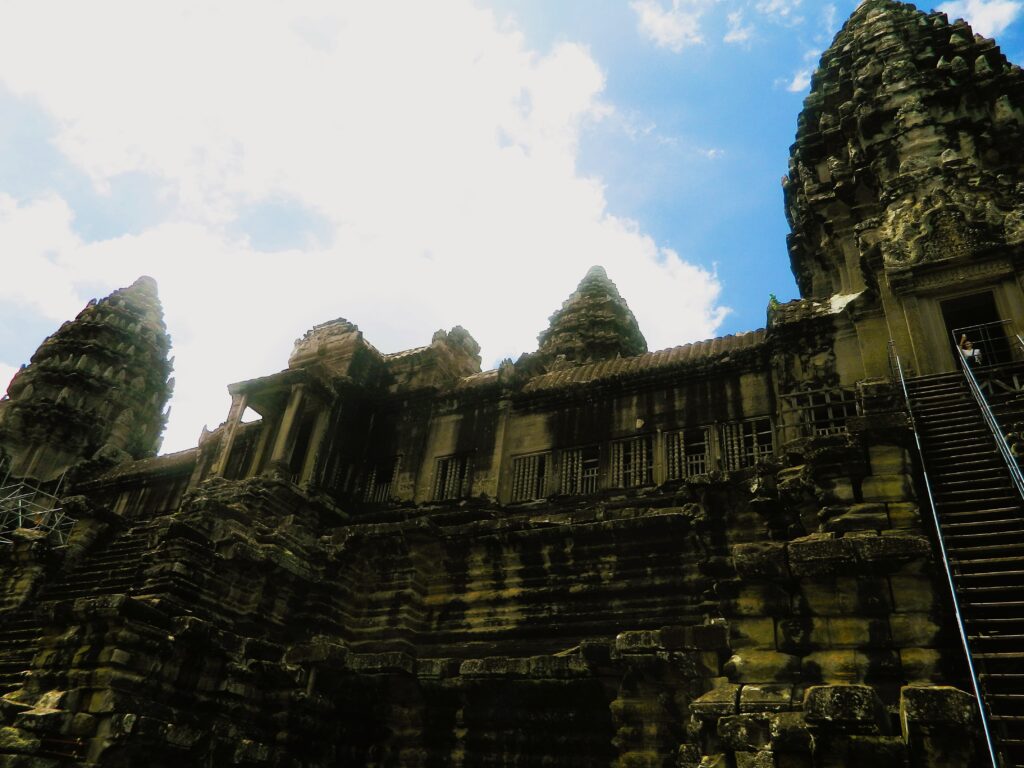
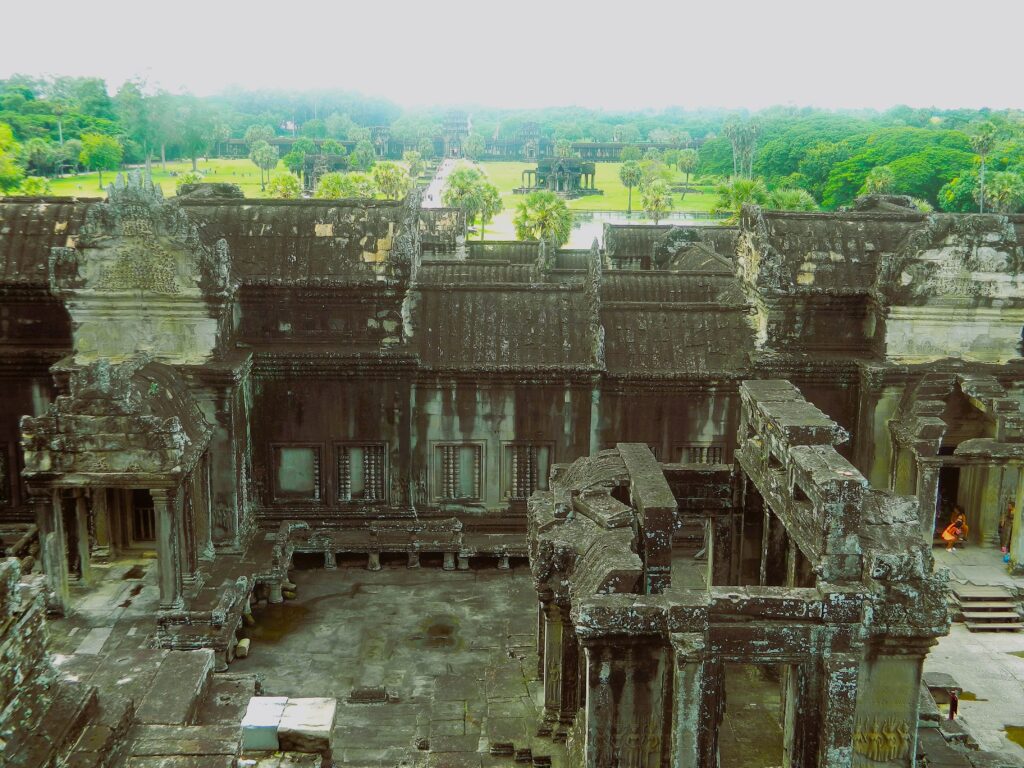
Bayon Temple
The most famous and remarkable archaeological site of Cambodia, apart from the Angkor Wat, is the Bayon temple. It is located at the heart of Angkor Thom, the ancient capital of the Khmer empire. It was built around the 12th and 13th century by Jayavarman VII, another Khmer king.
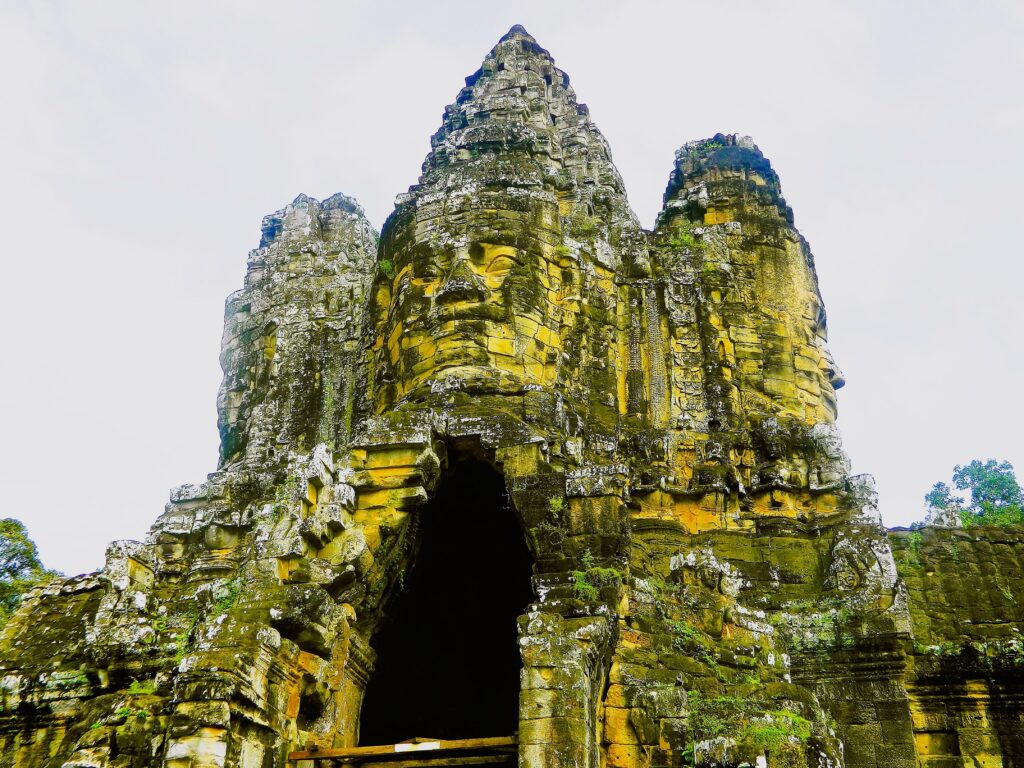
The first thing that strikes one is the great pathway leading to the gate of Angkor Thom. Carved there, in stone, is the legend of Samudra Manthan. On either side of the pathway are long rows of massive statues, with Devas on one side and Asuras on the other. They are holding the mighty serpent Vasuki representing the rope used in the cosmic churning. The faces of those figures clearly indicate who are the Devas, and who the Asuras are.
Although Bayon is predominantly a Buddhist temple, the incorporation of this Hindu theme shows the peaceful co-existence of both the religions.
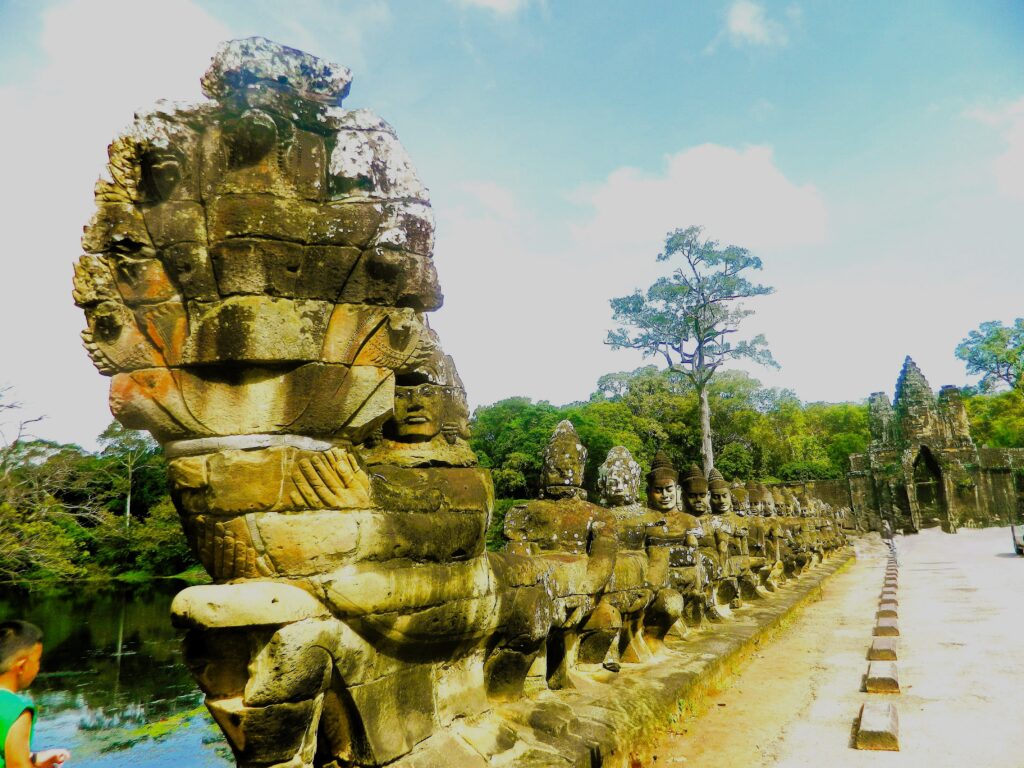
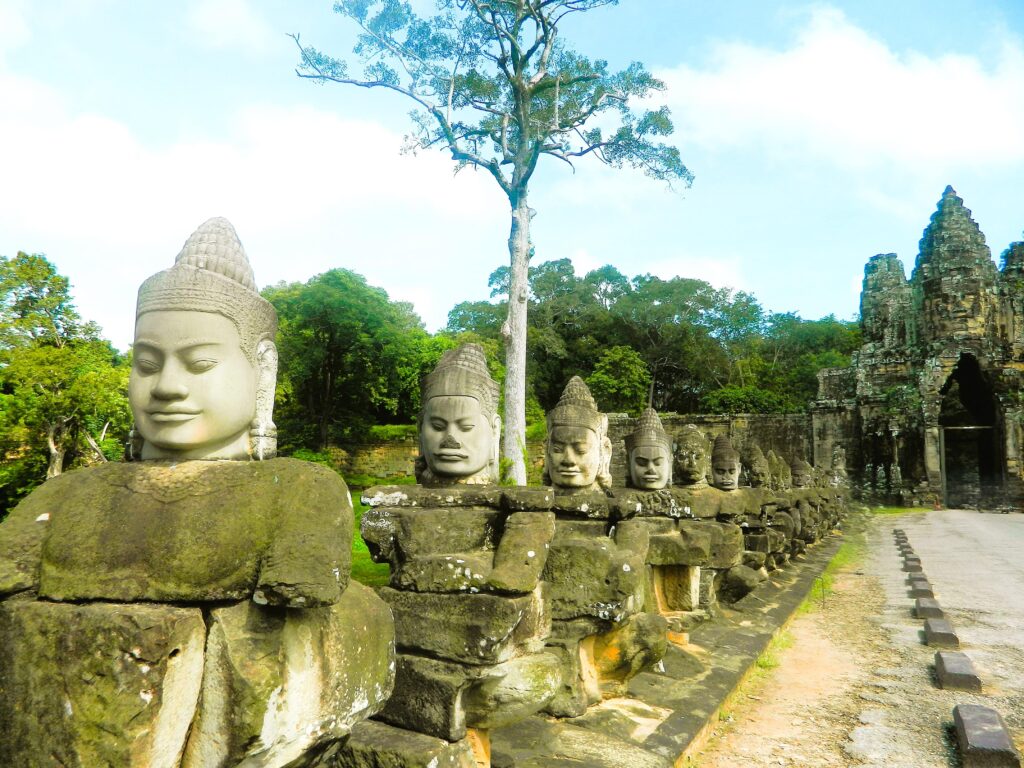
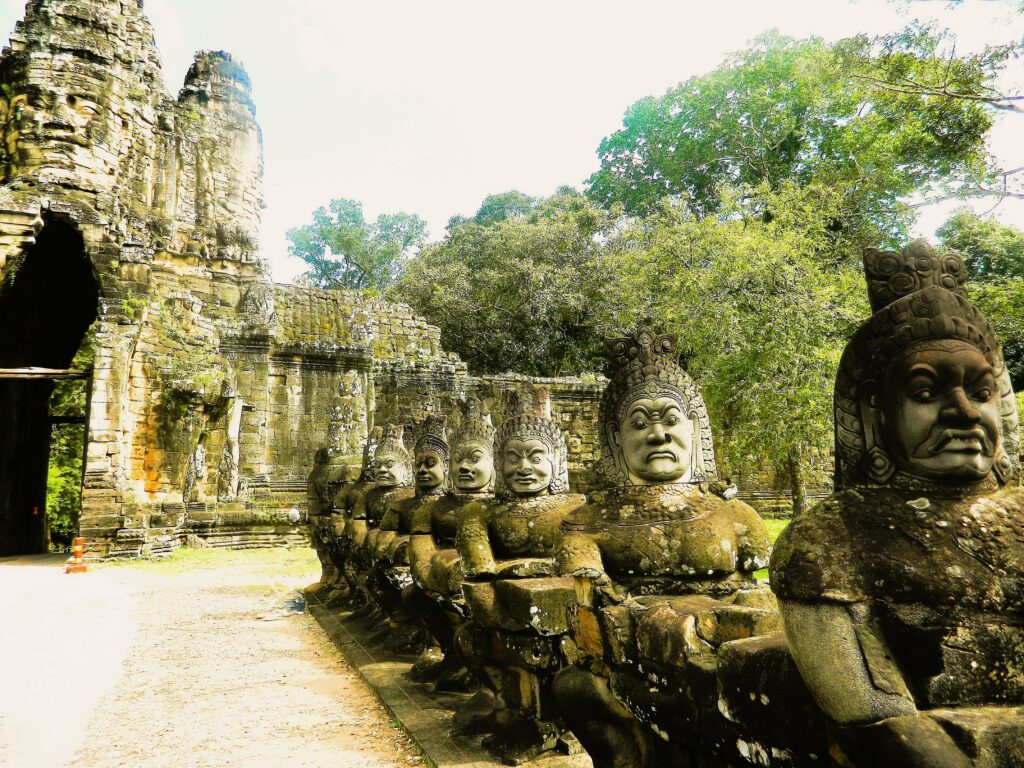
The Bayon temple is, however, more famous for its massive 4-faced stone sculptures and intricate bas-reliefs. These showcase the remarkable spiritual vision of the sculptors. There are over 200 such massive faces carved on 54 towers. Some say that these serene and enigmatic faces depict the Buddha while others say that they represent Shiva.
The temple and the Samudra Manthan theme taken together represent the artistic and spiritual genius of the sculptors. It also reflects the grandeur of the Khmer empire.
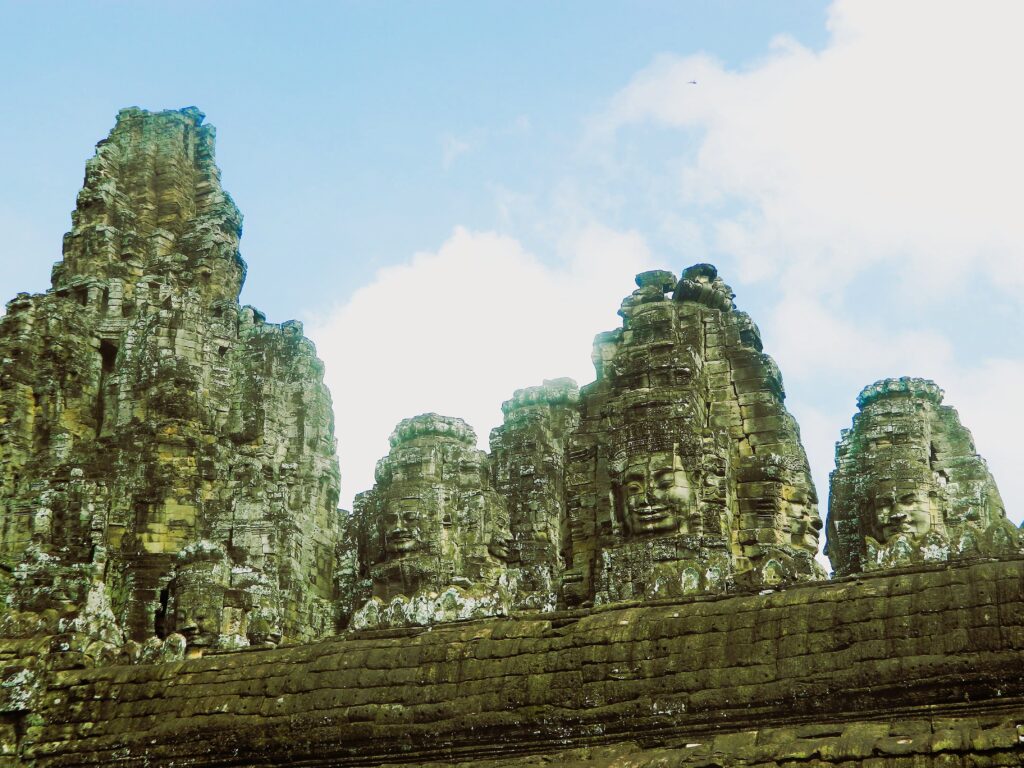
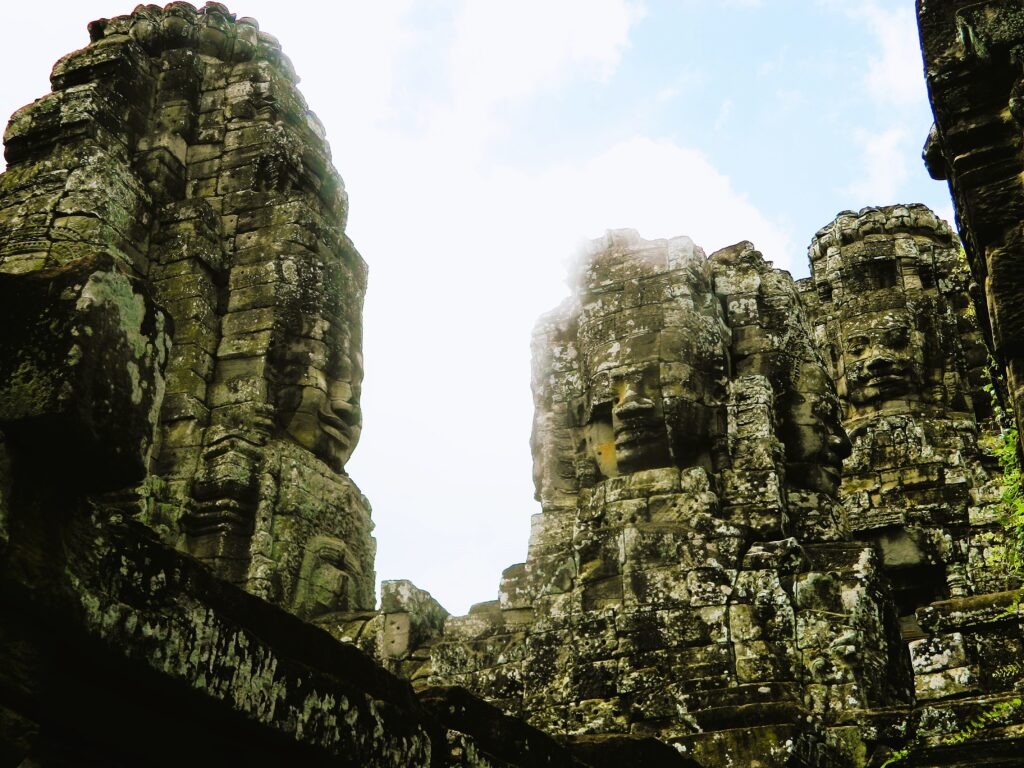
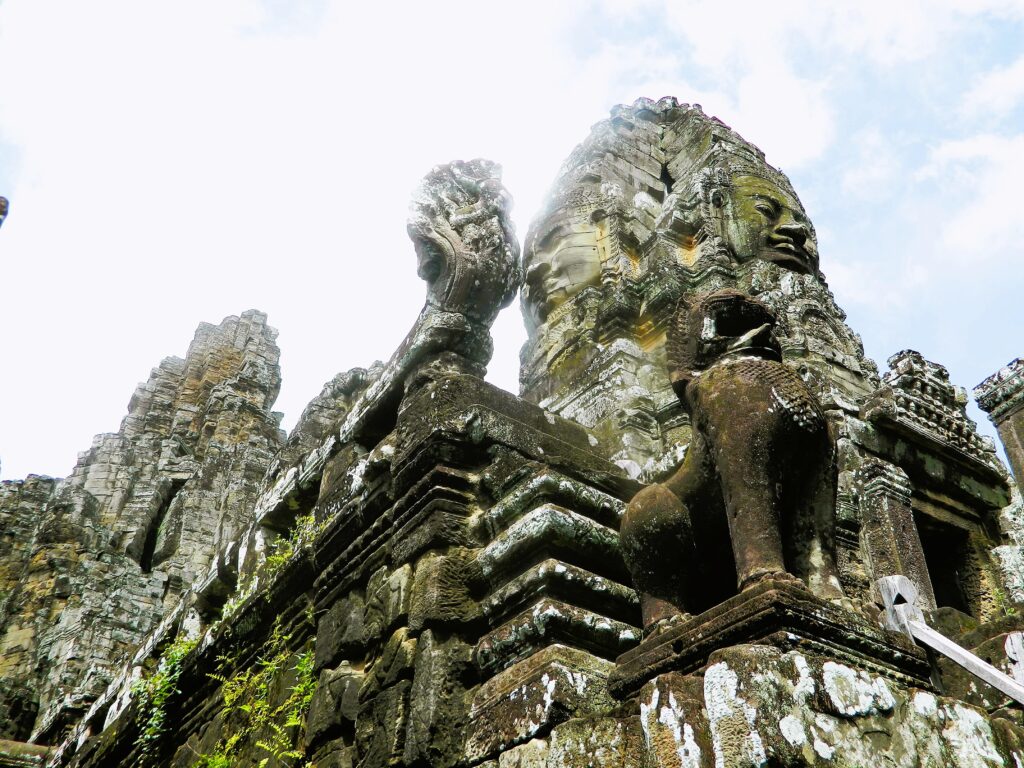
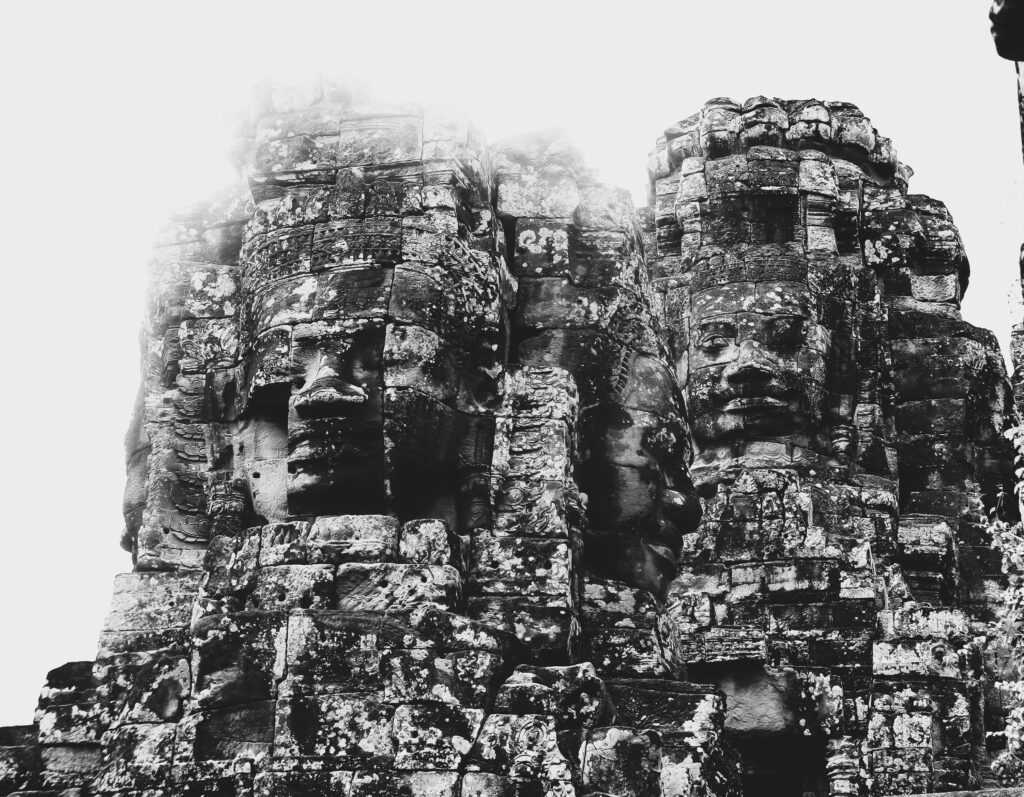
Ta Prohm
Sadly, Cambodia has not been able to preserve all its priceless legacy as is evident from the ruins of the Ta Prohm temple – now more famously known as the Tomb Raider temple because the Hollywood movie Lara Croft: Tomb Raider, was shot here. The site is famous for its unique blend of ancient architecture and nature as massive trees and their sprawling roots have grown into the temple’s structure over centuries, thereby creating a mesmerizing and mysterious atmosphere.
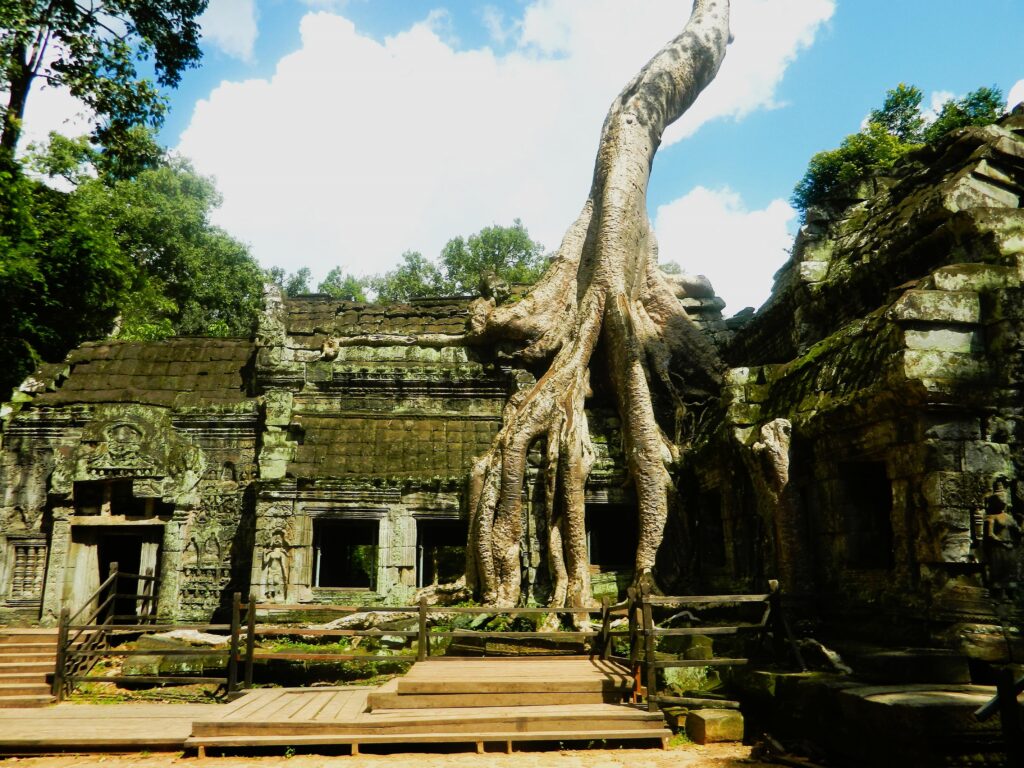
Like the most of the temples in Cambodia, Ta Prohm fell into disuse in the 15th century and was lost in the jungles. It was rediscovered only in the 19th century by the French explorers. Now preservation efforts have begun while maintaining the “jungle temple” aesthetic and to prevent further consumption of the ruins by the encroaching jungle.
It is a sober reminder of the transience of human achievements when confronted with the enduring power of Time and Nature.
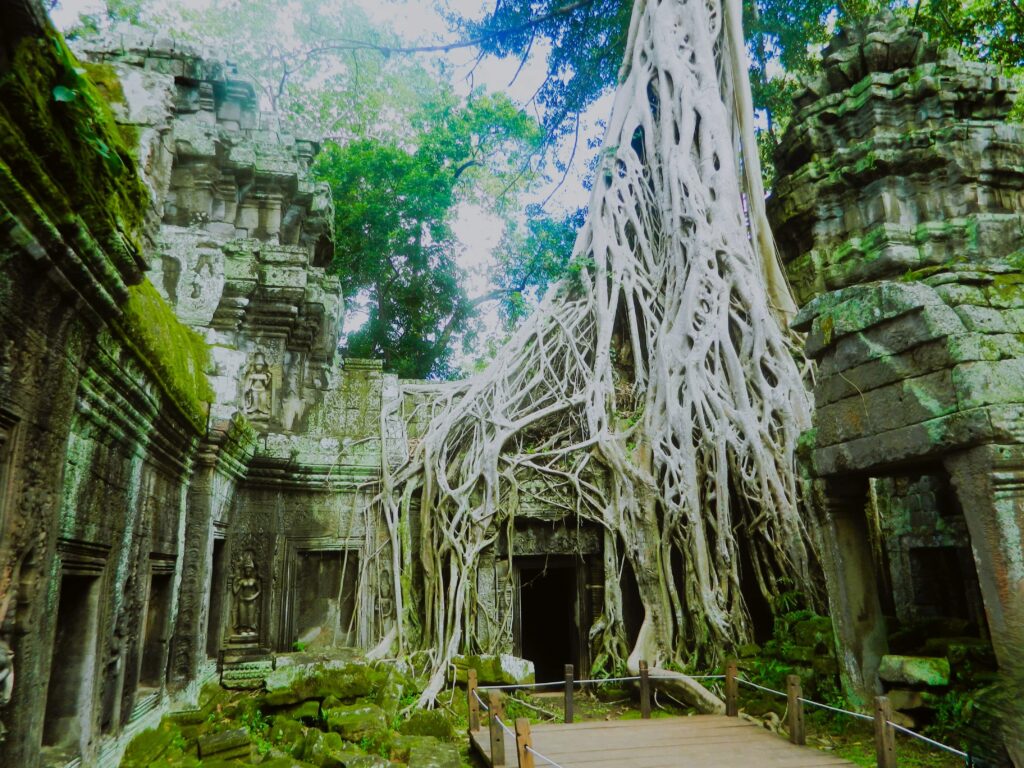
My heart swelled with pride, admiration and exultation for those wizards who carved these marvels on stone and for the monuments they raised centuries back that still continue to sing the glory of the sacred Indian architecture – far beyond the shores of this land beneath the Eastern skies.

